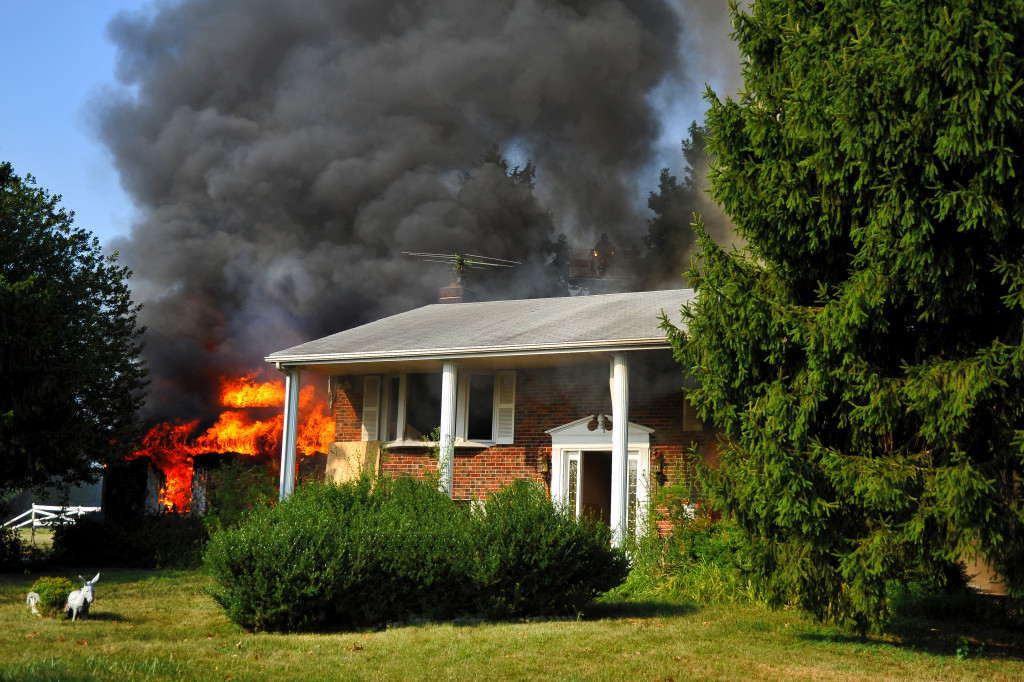- Choose fire-resistant building materials, including metal roofing and concrete walls.
- Use fire-resistant landscaping with native species of plants, deciduous plants, wetland plants, and fire-resistant ground cover.
- Install double-paned or impact-resistant windows to stand up against intense heat and direct flame.
- Install smoke alarms, carbon monoxide detectors, fire extinguishers, and a fire escape ladder.
- Have a fire safety plan outlining two escape routes and ensure all household members are aware of it.
As a homeowner, taking the necessary precautions to protect your abode from fire damage is essential. A fire can cause property loss, severe injury, or even death. With frequent residential fires worldwide, building a fire-resistant house has become more vital than ever. You want to ensure your home and family are safe in case of a fire. This blog post will discuss the best tips for building a fire-resistant home.
1. Choose fire-resistant building materials.
When constructing your home, opting for fire-resistant materials is the first step. Wooden and shingled roofs are affordable and commonly associated with traditional home designs. However, they are also more susceptible to fire damage. There are now several alternatives for shingles and roofing materials that are fire-resistant. Consider asking your builder for options.
For one, durable metal roofing is an increasingly popular choice for fire-resistant roofing materials. Not only are they corrosion and rust-resistant, but metal roofs also provide superior fire resistance compared to traditional shingles. Concrete walls are also a great choice as they can withstand intense heat and direct flame from outside sources.

2. Prioritized fire-resistant landscaping.
The area surrounding your house can fuel a wildfire. If you’re living in a fire-prone area, prioritize your landscaping with fire-resistant plants that are green, lush, and have a high moisture content. Here are some ideas:
a. Native species of plants
Native plants that are accustomed to the local climate and environment are the most fire-resistant plants for your landscaping. They are resilient and can survive natural disasters like heavy winds, snow, and flooding.
b. Deciduous plants
Deciduous plants lose their leaves in the winter, and they are ideal for fire-resistant landscaping. A few examples of deciduous plants include maple, oak, birch, and elm trees.
c. Plants with high moisture content
Plants that contain a lot of water, such as wetland plants, are great for fire-resistant landscaping. These plants have high moisture content and can act as a barrier against fires. Good examples of these plants include reeds, rushes, and sedges.
d. Fire-resistant ground cover
Ground covers like gravel and mulch is ideal for fire-resistant landscaping as they are less flammable than plants. You can also use stones or rocks for the same purpose.
3. Install fire-resistant windows.
Many people tend to overlook the critical role that windows play in fire-resistant home construction. Windows are one of the most vulnerable areas in your home, as they can easily be broken and allow smoke or heat to enter. To ensure that your windows are fire-resistant, consider installing double-paned or impact-resistant ones. These windows are designed to withstand intense heat and direct flame from outside sources.

4. Install fire safety equipment.
Installing the right fire safety equipment is essential for a fire-resistant home. You should have smoke alarms and carbon monoxide detectors in good working order throughout the house. Fire extinguishers should also be available in every room of the house and kept up to date. Additionally, consider investing in a fire escape ladder if you have a home with more than one story.
You should also store important documents such as birth certificates, passports, and insurance papers in a fireproof safe. This way, you can ensure that your important documents remain safe during a fire. If your home has a gas line, installing a carbon monoxide detector in case of a gas leak would also be wise.
5. Have a fire safety plan.
Even the most fire-resistant homes are not entirely impervious to fire. A fire safety plan can be life-saving and can save your property in the event of a disaster. Make an evacuation plan with two escape routes and practice executing it with your family. Be sure to have smoke detectors installed in each room and fire extinguishers and blankets in easy-to-reach areas.
Protecting your home from fires is vital to being a responsible homeowner. Using the tips outlined in this blog post, you can help ensure your home is fire-resistant. Take the time to choose fire-resistant materials, prioritize fire-resistant landscaping, install proper windows and safety equipment, and develop a fire safety plan. Doing so can save your home and help protect your family from the devastation of a fire.



